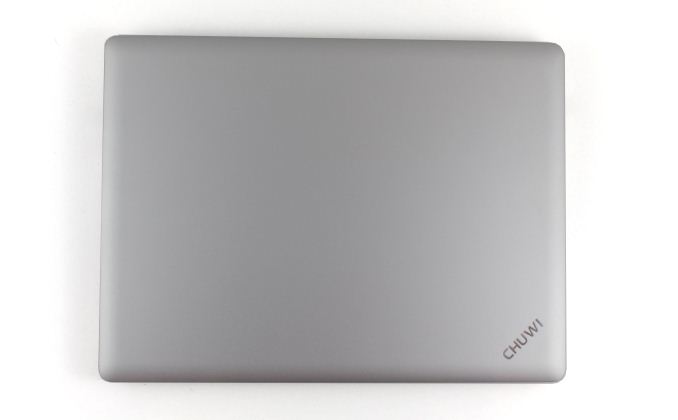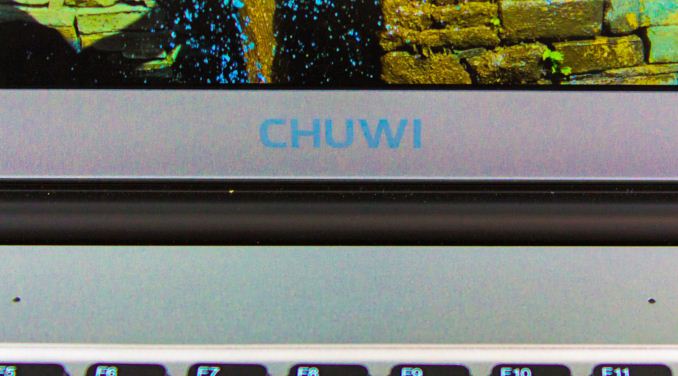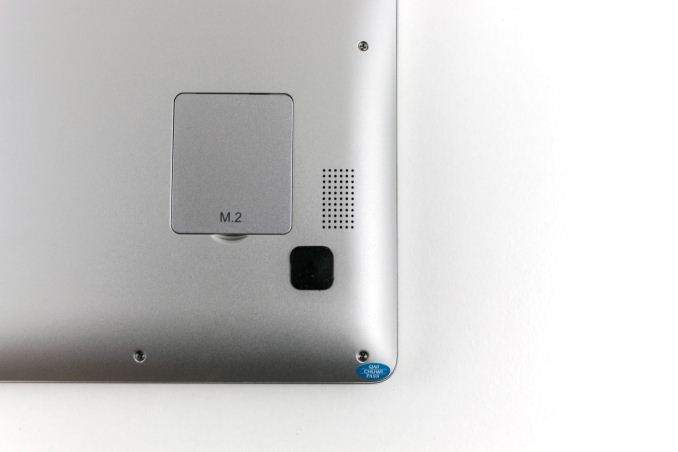The Chuwi LapBook 12.3 Review: Premium Feel, Budget Price
by Brett Howse on September 6, 2017 8:00 AM EST- Posted in
- Laptops
- Apollo Lake
- Goldmont
- Chuwi
Final Words
This is one of the shortest reviews we’ve ever done of a laptop, mostly because it is almost a complete replica of the larger Chuwi LapBook 14.1 we reviewed earlier this year. With the same internals, the performance is practically the same, and it would be very easy to write the smaller version off as a smaller version of the larger notebook. In fact, this isn’t actually the case at all.
Honestly, Chuwi needs to work on its branding more than almost anything. They’ve fallen into calling their devices names that are very similar to other products from other manufacturers. This is probably with the attempt to leverage some of that existing brand recognition, but it is to Chuwi’s detriment to do this. Their products can stand on their own, and be judged on their own. They aren’t all home runs; Chuwi sent the Hi-13 2-in-1 tablet a while back for us to check out, and although we’ve not had a chance to do a full review on it, the Hi-13 is a bit too heavy and awkward as a tablet, and the 2-in-1 nature means that it’s even heavier when used as a laptop, but the LapBook’s we’ve checked out are a different story. Both the LapBook 14.1 and LapBook 12.3 are great devices for the money.
Their naming is confusing though, since they offer several models in the LapBook range, and the only thing different is the screen size tacked on the end, but the LapBook 14.1 and 12.3 are very different devices. The plastic 14.1 is a fine machine for $270, with a good 1920x1080 IPS display that you normally don’t see in a laptop that price, but the LapBook 12.3 is a step ahead of the larger 14.1 in several categories. What makes the LapBook branding even more confusing is that they also offer a LapBook 15.6 which is an older Atom X5 platform, with a 1920x1080 TN display. That means there are three LapBook models, and all of them are significantly different than the others. The company needs to do a better job differentiating its products.
The LapBook 12.3 does jump ahead of the 14.1 in several areas. The display is one of the standout features. The 12.3-inch panel offers great pixel density, for very sharp images and text, and the 3:2 aspect ratio makes it great for productivity tasks. The bezels are larger than many other laptops, including the LapBook 14.1’s 7mm bezels, but is a fact of life when Chuwi can’t afford to get their own custom panels made. They wanted to go with the 3:2 panel, and it was a good choice, despite the bezels.
The all-aluminum build on the LapBook 12.3 puts it into a much higher category of laptop for look and feel. The plastic on the 14.1 was fine, and durable, but this design has that sleek, cool feel of aluminum that you just can’t replicate. It doesn’t change the way you use the device, but it really makes it feel like it’s something you paid a lot more for.
Overall, the Apollo Lake platform is speedy enough for light tasks, and the generous 6 GB of RAM is far more than you see on most budget devices. The 64 GB of eMMC is adequate, but you can pretty easily add more storage via microSD or M.2 if you need it. Even the WiFi is an Intel solution, meaning it’s going to be a stable connection, at least in our experience.
The LapBook 12.3 takes everything that made the 14.1 great, and steps it up a notch. But the amazing thing is that it does this, and doesn’t take the price and put this laptop into another category. The Chuwi LapBook 12.3 isn’t going to be able to compete with Ultrabooks on many fronts, but it does offer a lot of an Ultrabook’s appeal in its thin, light, and sleek design, but with a much, much lower price point. Not very long ago, buying a laptop for under $500 meant it was going to offer several severe compromises, but Chuwi has proven, again, that a low-cost computer doesn’t need to be that way. If you’re ok with the smaller display on the LapBook 12.3, you end up with an amazing laptop for the price.













60 Comments
View All Comments
ianmills - Thursday, September 7, 2017 - link
I guess the bigger one has a copper heatsink. Techtablets has a bunch about this. Adding a copper heatsink can improve performance quite a bitvanilla_gorilla - Wednesday, September 6, 2017 - link
This doesn't seem that shocking of a price. For $270 you can get an all aluminum Acer Chromebook 14 with a 1080p IPS display, 4GB RAM and 32GB eMMC. And the acer has been available for several months.tipoo - Wednesday, September 6, 2017 - link
I have it. I hope they updated it to Apollo Lake soon, the Braswell CPU is pretty slow.kefkiroth - Wednesday, September 6, 2017 - link
I think it's at least a little surprising. The LapBook 12.3 has 2 more GB of RAM, a slightly better processor, a much higher resolution display, and double the storage for just ~$60 more.systemBuilder - Wednesday, September 6, 2017 - link
RAM is $10/GB = $20.Flash is $0.50/GB = $16
Better screen, I guess, is about $18 more, markup is assumed 10%.
tipoo - Wednesday, September 6, 2017 - link
I don't think Windows is free in this screen sizenotashill - Wednesday, September 6, 2017 - link
What BIOS version was used for testing? I've seen some people on the Chuwi forums say that the most recent BIOS update significantly raised maximum brightness, seems to be dated 2017/06/12.See: http://forum.chuwi.com/forum.php?mod=viewthread&am...
http://forum.chuwi.com/thread-4473-1-1.html
jabber - Wednesday, September 6, 2017 - link
If you can put Neverware on this and you have a great Chromebook!BrokenCrayons - Thursday, September 7, 2017 - link
I's prefer a Linux disto if looking into an alternative OS. Chromebooks are distressingly limited in capability. The end user is probably better off leaving Windows in place since it can do anything Chrome OS can do and a lot more.jabber - Sunday, September 10, 2017 - link
Well as this is essentially a Chromebook re-purposed for Windows I'd say ChromeOS would work better. I use a mix of Windows and ChromeOS machines and it is so nice to use a Machine that doesnt take ages to update and boot etc. ChromeOS just works and for a lot of people that's all they want. If not why did MS bother with the farce that is Windows S?